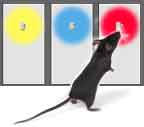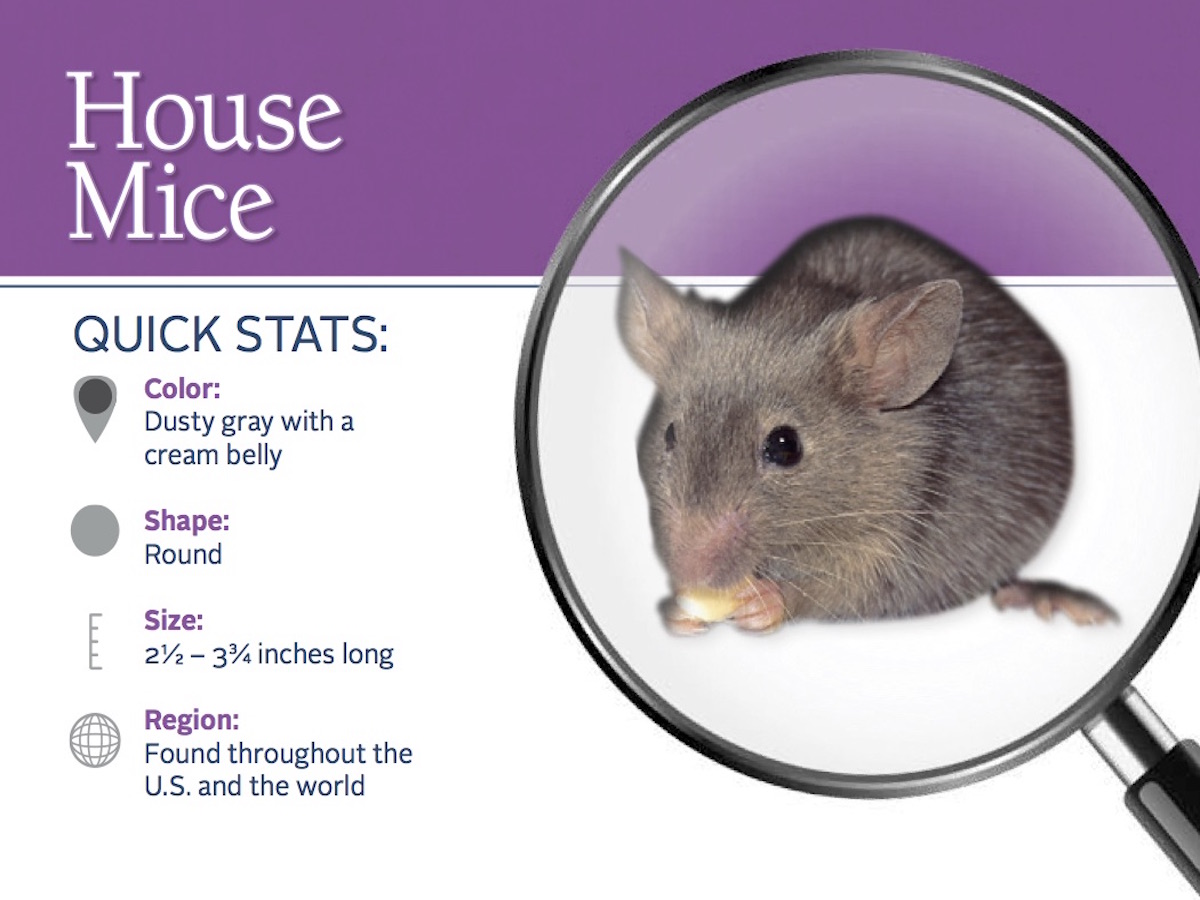
In fact they see mostly greys and some blues and yellows. Red is most visible color from a distance if you think in terms of objects becoming apparently smaller as they recede.

Its fur is dense and silky and is dark grey or black with a whitish underside and tufts of white around the eyes and on the ears.
What colors can mice see. They see the world as a blend of blues yellows and greys. Mammals with limited color vision or none at all include mice rats rabbits cats and dogs. Nocturnal animals - such as foxes owls skunks and raccoons - whose vision is specialized for dim light seldom have good color vision.
By comparison humans are color-blind in dim light. Mice are colorblind so they see colors similar to the way red-green color-blind people do. That doesnt mean they dont see any colors at all but they cant see many.
They look at the world in shades of gray and a few additional hues like dull yellow and blue. Our extra cone colors the world in a way that mice can only dream of until now. A few years ago two groups 2 3 independently generated a transgenic mouse that expresses the human red retinal pigment in addition to the native mouse green and blue pigments giving the mouse a trichromatic retina.
Champagne mice can look anything from a pale orange to a pinky grey and as you will see from the photo can also be sort of gold. Again my example is a satin coat though and this particular little girl would be considered far too dark by show standards. A house mouse is usually one color although the color is lighter on their undersides than their topsides.
Deer mice are distinguished by white feet legs and undersides. Their tails are white on the underside. The hair on the rest of their body is often gray or brown.
Mice come in a wide variety of colors and sizes. Some common mice colors are white brown and grey. Some are very tiny and others are around the size of a baked potato.
Its coat is beige red-brown or dark brown with a white belly. Its eyes and ears are smaller than those of a house mouse. Field mice are excellent jumpers and their hind legs are stronger than those of house mice.
The weight of a field mouse varies between 13 and 27 g. House and deer mice are the two species which are often seen in household premises. They are very similar to rodents but are tinier than rats and squirrels.
They are also usually 3 inches long and their tails are nearly of the same length. Most mice are black or brown with a pointed nose. THE COLORS THEY SEE.
SPIDERS jumping spiders ULTRAVIOLET AND GREEN. INSECTS bees ULTRAVIOLET BLUE YELLOW. CRUSTACEANS crayfish BLUE AND RED.
CEPHALOPODS octopi and squids BLUE ONLY. MOST SEE JUST TWO COLORS. AMPHIBIANS frogs MOST SEE SOME COLOR.
Such conditions would allow humans to see but would be on the margins of mouse visual sensitivity McLennan and Taylor-Jeffs 2004. However based on the known visual pigments of the mouse retina mice are around 12 time less sensitive than humans to 600 nm red light and around 8 times less sensitive to 589 nm sodium light. You will notice several different colors in the splashingblack marks gray marks brownish marks all on one mouse.
Ideally you want small splash-spots all overnot specific markingspatches. Also odd-eye is a common thingnot real obvious with pinkblack eyes but with blackruby eyes. Some people might think mice are cute but unfortunately they can carry a lot of diseases that are dangerous to humans.
Contrary to popular belief mice dont like cheese as much as they like peanut butter chocolate and bacon. If you take away their food shelter and easy access to your home you make it much less likely that mice will come back once youve. The eyes of nocturnal creatures have evolved differently from ours to enable them to see in the dark or make the most of very dim light.
Mice also respond to ultraviolet light. Scientists have observed that mice with visual defects react to light even. Some have very poor color vision and others have very good color vision.
In fact some birds and bees have super color vision and see colors that humans dont see. Poor Color Vision and Animals. Dogs cats mice rats and rabbits have very poor color vision.
In fact they see mostly greys and some blues and yellows. Normally pigmented rats have panoramic blurry vision with faint greens blues and ultraviolets. These colors may or may not be meaningful to the rats.
This kind of vision probably works just fine for rats. Rats can see food and other rats a short distance away but are still sensitive to incoming hawks or dogs and distant orientation cues. 1 Mouse strains can differ dramatically in terms of visual function and in fact many strains are partially or completely blind due to inherited photoreceptor degeneration and albinism.
2 Mice are non-foveal and as a result they may rely on head movements more than eye movements to view specific portions of visual space. House mice are for the most part harmless but in large numbers they can cause structural and hygiene problems especially for businesses. How to identify a house mouse.
House mice are the most basic type of mouse and can be characterised by the following features. Light brown with a lighter belly. About one year in the wild.
Colors such as orange are bright for them but they dont see the shorter wavelength colors like green very well. They see blue and yellow but in a faded version because these animals have only two color receptors. This is an elusive animal and is rarely seen but its the largest species of shrew in the UK and can grow up to 10cm in length.
Its fur is dense and silky and is dark grey or black with a whitish underside and tufts of white around the eyes and on the ears. The most obvious are. A mouses head is more pointed than a rats head which is wedge-shaped.
A mouses ears are larger in proportion to its head than a rats ears are. A mouses eyes arent small and beady like a rats eyes. The colors are grays and browns for both but rat fur is darker and rougher than mouse fur.
Dogs can see colorcontrary to what we once thought. Although they dont see in black and white they also dont see the same colors as humans. The anatomy of dogs eyes and their photoreceptors differ from that of humans and other species giving dogs a.
Answer 1 of 5. Red is most visible color from a distance if you think in terms of objects becoming apparently smaller as they recede. A flag a wall a rubber ball all these objects appear smaller as they get further away but a rubber ball held in.
What Colors Birds See. Birds see more colors than humans in several ways. Not only are birds able to perceive the familiar rainbow of colors as well as parts of the ultraviolet UV spectrum that are invisible to human eyes but they also have better visual acuity.
This means birds can determine subtle differences between similar shades of.